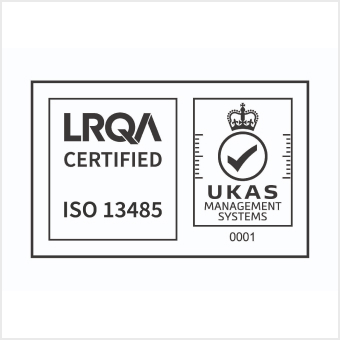Flexible Cellular Materials
- Definition and Classification of Flexible Cellular Materials
- What are flexible cellular materials?
- Types of flexible cellular materials (foam, rubber, elastomers, etc.)
- Overview of their structure: Open-cell vs. closed-cell
- Differences between flexible and rigid cellular materials
- Importance of flexible cellular materials in industry
- Historical Development of Flexible Cellular Materials
- Early materials and their evolution
- The role of chemical engineering in the development of modern flexible foams and elastomers
- Key breakthroughs in manufacturing and material science
- The rise of synthetic flexible materials (polyurethanes, silicones, and elastomers)
- Key Properties of Flexible Cellular Materials
- Mechanical properties: Elasticity, compressibility, and resilience
- Thermal properties: Insulation, heat resistance, and conductivity
- Acoustic properties: Sound absorption and noise control
- Physical properties: Density, hardness, and flexibility
- Durability and aging: Resistance to environmental factors such as UV, moisture, and ozone
- Applications of Flexible Cellular Materials
- Automotive: Seats, dashboards, insulation, gaskets, soundproofing
- Construction: Insulation, sealing, soundproofing materials
- Medical: Prosthetics, cushioning, wound care products, and padding
- Consumer goods: Mattresses, pillows, protective padding
- Industrial: Gaskets, seals, vibration damping, and filtration
- Packaging: Protective foam packaging and cushioning
Part 2: Manufacturing and Production of Flexible Cellular Materials
- Polymeric Materials Used in Flexible Cellular Materials
- Thermoplastics vs. thermosets
- Types of polymers commonly used (polyurethane, polystyrene, polyethylene, silicone, etc.)
- The role of additives in modifying properties (plasticizers, fillers, curing agents)
- Polyurethane Foams
- Types of polyurethane foams: Flexible, rigid, and semi-rigid foams
- Manufacturing processes: Reaction injection molding (RIM), slabstock foam, high-density foam
- The role of polyols, isocyanates, and catalysts in polyurethane foam formulation
- Applications of flexible polyurethane foam: Mattresses, cushions, packaging, automotive
- Rubber-based Flexible Cellular Materials
- Natural rubber vs. synthetic rubber foams
- Production techniques for rubber foams (compression molding, extrusion, injection molding)
- Applications of rubber foams: Insulation, seals, vibration dampening
- Silicone-Based Cellular Materials
- Characteristics of silicone rubbers and foams
- Processing methods for silicone foams: Extrusion, molding, and curing
- Applications: Medical devices, seals, and gaskets
- Other Flexible Cellular Materials
- Polyethylene foams
- EVA (ethylene-vinyl acetate) foams
- Fluoroelastomer foams
- New advances in bio-based and sustainable foam materials
Part 3: Properties and Characterization of Flexible Cellular Materials
- Mechanical Properties of Flexible Cellular Materials
- Stress-strain behavior of flexible cellular materials
- Compressive strength and elasticity
- Resilience, recovery, and hysteresis
- Shear strength and tear resistance
- Thermal and Acoustic Properties
- Thermal conductivity and insulation performance
- Temperature resistance and stability over time
- Noise and vibration damping: Acoustic properties of foams
- Fire resistance and flame-retardant properties
- Environmental Durability and Aging
- Resistance to moisture, UV, ozone, and chemicals
- Effect of temperature cycling on material properties
- Aging behavior: Long-term performance in harsh conditions
- Surface Properties and Texture
- Surface smoothness vs. roughness
- Hydrophobic and hydrophilic characteristics
- Surface treatments and coatings for improved performance
- Sustainability and Environmental Impact
- The role of bio-based polymers in reducing the environmental footprint
- Recycling and reusing flexible cellular materials
- Challenges with the disposal of foam and rubber products
Part 4: Testing Methods for Flexible Cellular Materials
- Mechanical Testing of Flexible Cellular Materials
- Tensile testing, compression testing, and fatigue testing
- Dynamic mechanical analysis (DMA) and viscoelastic behavior
- Hardness testing: Shore A and Shore D scales
- Thermal Testing
- Thermal conductivity measurements and insulation tests
- Thermogravimetric analysis (TGA) for thermal stability
- Fire testing standards and methods (e.g., ASTM E84, UL 94)
- Acoustic Testing
- Sound absorption and noise reduction capabilities
- Measurement techniques: Reverberation time, sound transmission loss
- Standards for acoustic performance in flexible foams
- Durability and Environmental Testing
- Weathering tests (UV, ozone, moisture exposure)
- Aging tests: Accelerated aging, temperature cycling, and long-term degradation
- Resistance to chemical and solvent exposure
- Dimensional Testing and Quality Control
- Density and porosity measurement techniques
- Uniformity and consistency in foam production
- Techniques for evaluating dimensional stability over time
Part 5: Applications of Flexible Cellular Materials
- Automotive Industry
- Use of flexible cellular materials for seat cushions, soundproofing, gaskets, and insulation
- Impact of flexible cellular materials on comfort, safety, and performance
- Case studies of automotive parts failure or success with foam and rubber materials
- Construction Industry
- Insulation and soundproofing applications in buildings
- Sealing and weatherproofing materials
- Role in reducing energy consumption and improving indoor comfort
- Medical and Healthcare Applications
- Cushioning materials for patient beds and medical devices
- Foam materials used in prosthetics and orthotics
- Hygiene and cleanliness considerations in medical foam products
- Consumer Goods and Packaging
- Flexible cellular materials in packaging: Cushioning for fragile items
- The role of foam in mattresses, pillows, and other comfort products
- Use in sports and protective gear (e.g., knee pads, helmets)
- Industrial and Other Applications
- Vibration damping and shock absorption in machinery and vehicles
- Seals, gaskets, and filters made from flexible foams
- Impact on product longevity, efficiency, and safety
Part 6: Advanced Topics in Flexible Cellular Materials
- New Trends in Flexible Cellular Materials
- Development of advanced, high-performance foams for specific applications
- Integration of nanotechnology to improve foam properties
- The future of bio-based foams and environmentally friendly alternatives
- Challenges in Manufacturing Flexible Cellular Materials
- Scaling up from laboratory to commercial production
- Overcoming inconsistencies in foam density and quality
- Managing waste and optimizing production efficiency
- Design and Optimization of Flexible Cellular Materials
- Customizing foam properties for specific applications
- The role of computational modeling and simulations in foam design
- Design considerations for cost-effective and high-performance materials
- Future Directions in Flexible Cellular Material Research
- Smart and responsive materials: Development of foams with embedded sensors or adaptive properties
- High-performance foams for extreme environments (high-temperature, high-pressure)
- Sustainability-focused research: Biodegradable foams and closed-loop production systems
Part 7: Case Studies and Practical Insights
- Case Studies in Automotive Applications
- Detailed examples of flexible foam use in automotive components
- Lessons learned from material failures and successes in real-world applications
- Design recommendations for automotive engineers
- Case Studies in Construction and Insulation
- Innovative uses of flexible cellular materials in building and construction
- Performance analysis of flexible foams in insulation and energy efficiency
- Real-world examples of material performance and durability
- Case Studies in Healthcare and Medical Devices
- How flexible foams improve the functionality and comfort of medical devices
- Case studies on the application of foam in orthotics, prosthetics, and cushioning
- Product development and testing for medical-grade materials
Conclusion
- Summary of Key Points
- Recap of the importance and versatility of flexible cellular materials
- The role they play across various industries, from automotive to healthcare
- Future outlook on the continued development of these materials and technologies
- Final Thoughts on the Future of Flexible Cellular Materials
- The growing demand for high-performance, sustainable, and adaptable materials
- Challenges that need to be addressed in terms of manufacturing, sustainability, and application-specific requirements
- The potential for innovation in the design and use of flexible cellular materials



